Like insect pests, fungal diseases are a severe challenge to indoor and outdoor plant growers. However, these fungal infections are more potent in outdoor vegetable gardens because the fungal infection impacts the edible parts of cole and solanaceous crops with little to no produce. In this article, you will learn how to treat plant fungus with baking soda.
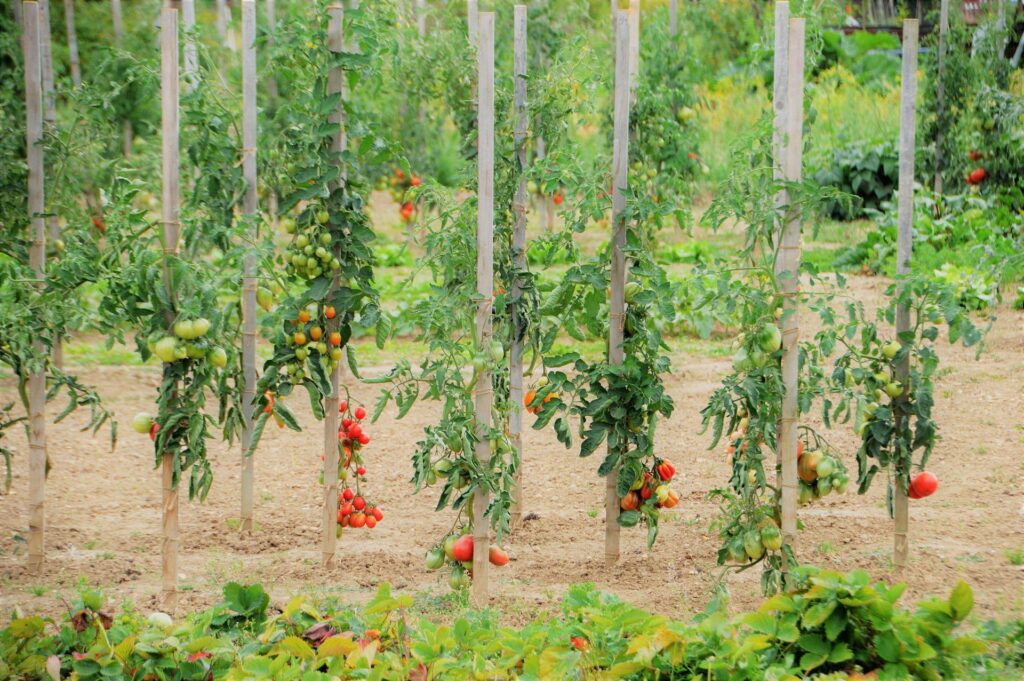
Vegetable garden with healthy produce—free from plant diseases
Interestingly, fungal infections are more common and persistent in weak and susceptible indoor plants. It ranges from anthracnose to opportunistic fungal problems. Such as powdery mildew, downy mildew, rust diseases, rose black spots, and plant root rots by root-based fungi.
The most common symptoms of plant fungus infections are irregular spots on foliage (under severe attack, defoliation occurs) and funny-looking growths on plants.
Baking soda is an excellent treatment against fungal pathogens because it kills their spore germination.
In this write-up, let’s understand how to treat plant fungus with baking soda to benefit plants.
Fungal Diseases in Plants

Brown spots or sporulation on cucurbit leaves due to plant fungus—the symptoms are severe during high moisture levels.
Fungal pathogens, like other microbes, thrive on host plant energy. As the plant fungus thrives, the entire plant starts withering and wilting. They continue to feed on plant nutrients and proteins, damaging the plants. Because the plants cannot use their energy for reproduction growth at this stage. As a result, the plant gives in to fungal infections and dies.
The injury or damage by plant fungus appears as scabs, wilting, moldy growth, leaf spots or scars, and fruit and vegetable rotting. On the other hand, the soil-dwelling or root-based fungi infect the plant roots and block the nutrient and water absorption from the soil.
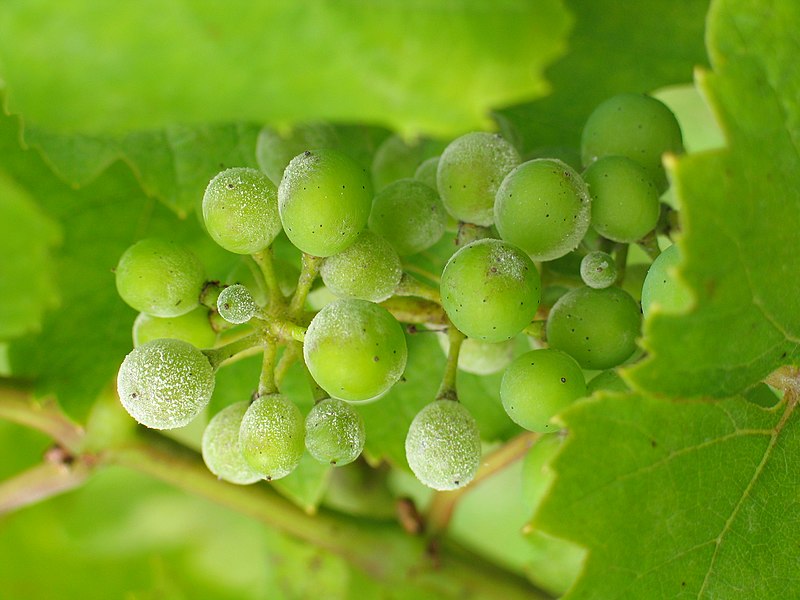
Powdery mildew infection on grapes at initial stages
The root-based fungal diseases impact both underground roots and above-ground foliage and stem. Even these plant fungi disrupt the aboveground water transportation. The image below indicates the Oak root rot and its visible impacts on leaves as discoloration.
RELATED: Vegetable Downy Mildew Disease: Its Identification and Management for Good!
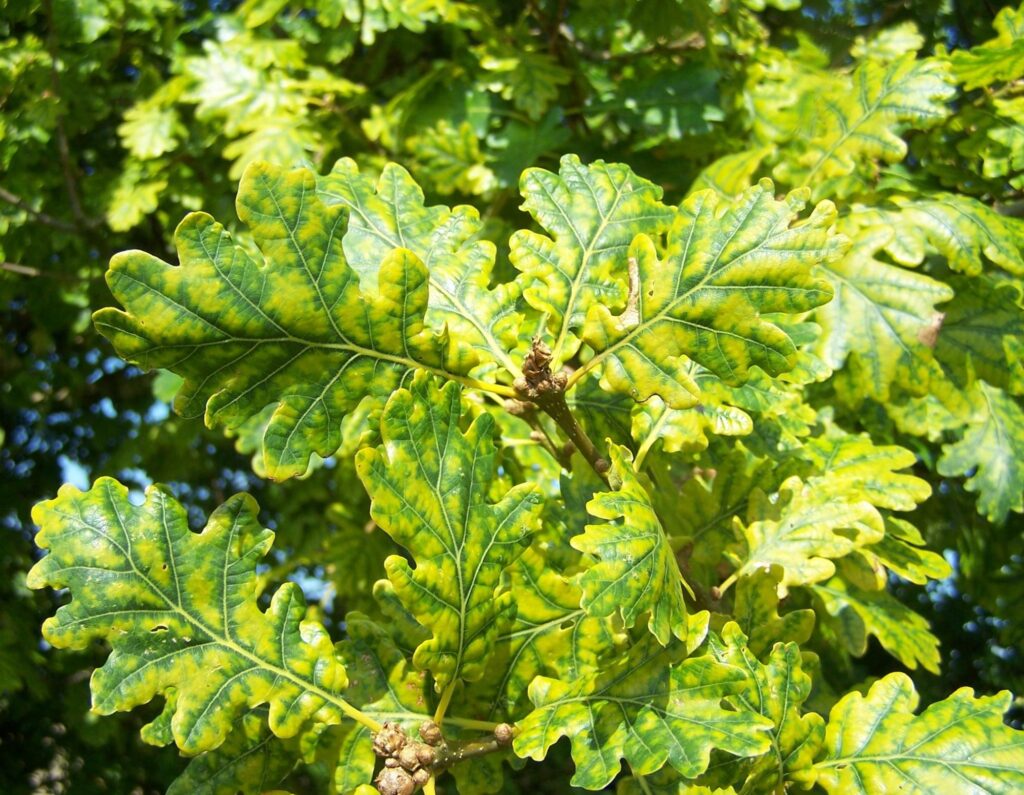
Discoloration of Oak leaves due to Armillaria root rot
What Naturally Kills Fungus on Plants?
The organic fungicide against plant fungus are:
- Baking soda or sodium bicarbonate
- Liquid soap
- Canola oil
- Hydrogen peroxide
- Neem oil
- Sulfur dust
- Cornmeal juice
- Vinegar
- Insecticidal soap (beneficial for indoor plants only at initial stages)
- Cinnamon
Note: The natural remedies for plant fungus control are helpful because they are non-toxic to the environment and humans. Moreover, these remedies do not harm the beneficial birds, insects, and pets.
Significance of Baking Soda as Natural Fungicide
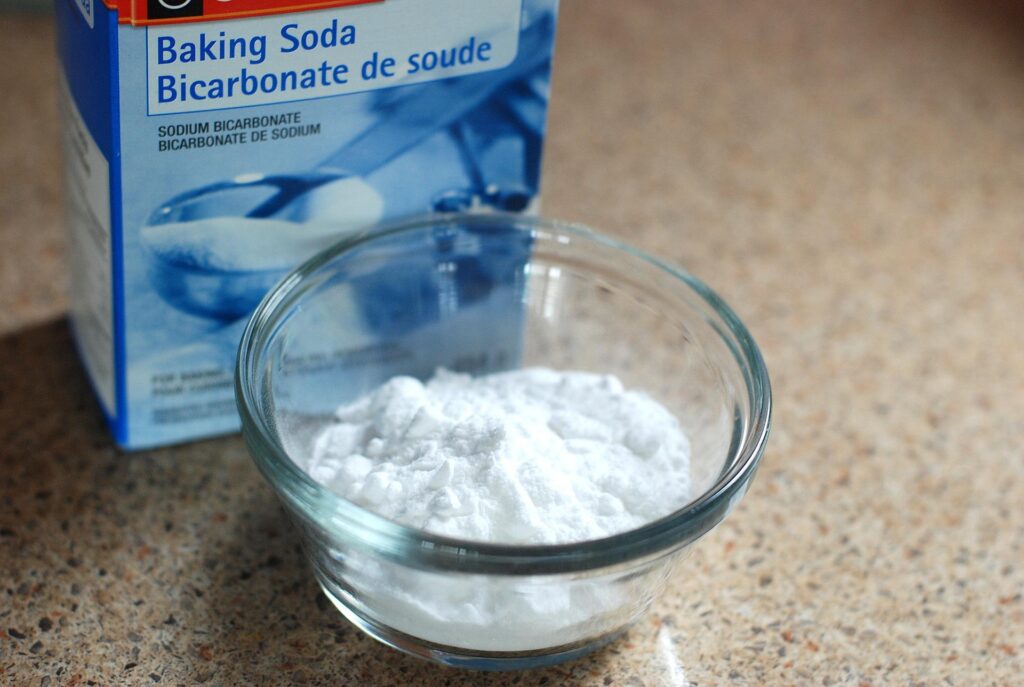
Use of baking soda as a natural fungicide against indoor and outdoor fungal diseases
In outdoor gardens and crops, commercial fungicides treat plant fungus problems. The popular antifungal agents are copper and sulfur-based, toxic to humans and the environment.
These copper and sulfur-based antifungal agents can be used in indoor spaces, but extra preventative measures are required.
It includes wearing protective clothes while applying and avoiding the entry of kids and pets into fungicide-treated plants. So, it is wiser not to use these commercial fungicides in indoor spaces. Or, if you treat your plants with them, move them to a location where they can not be disturbed.
The best spray against plant diseases involves baking soda to prevent powdery mildew and other fungal problems. In addition, baking soda (sodium bicarbonate) works as an antifungal agent and can kill persistent forms of fungal pathogens.
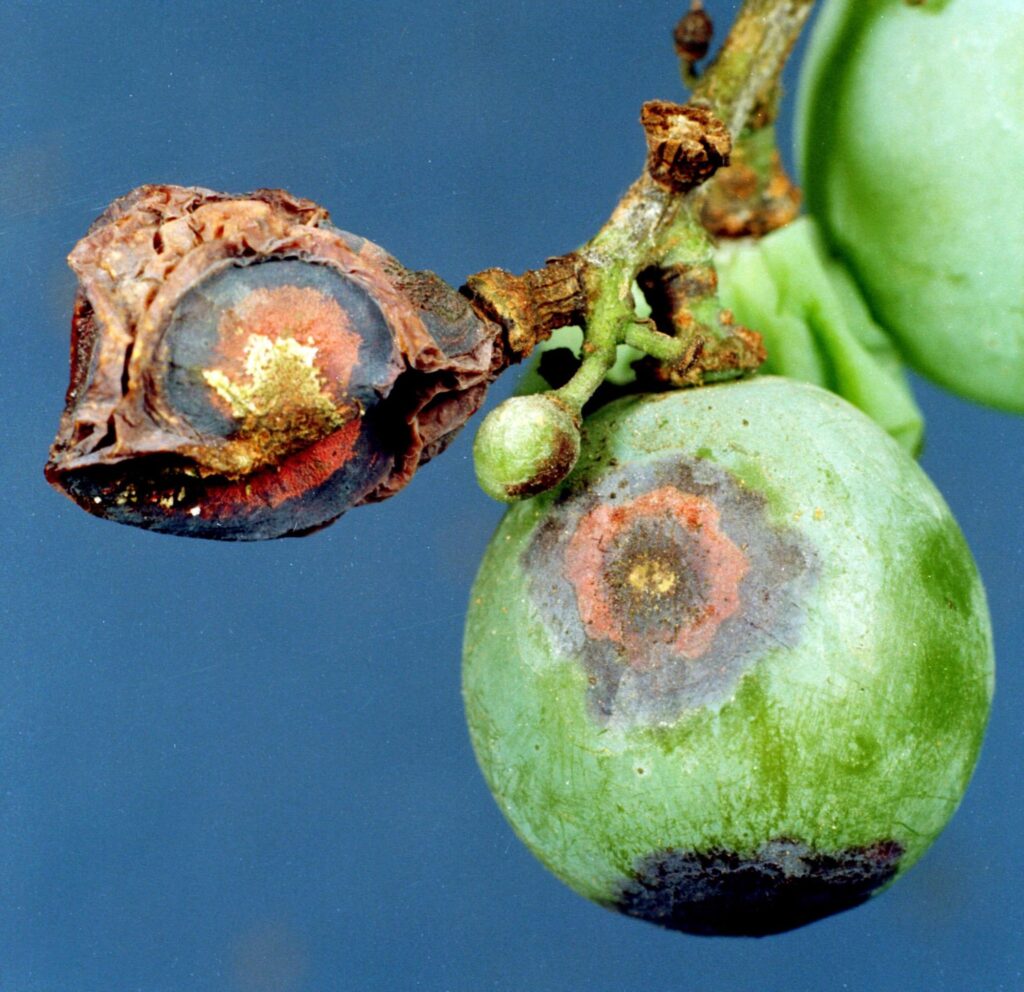
Baking soda spray is effective against all kinds of pathogens and can even prevent the anthracnose pathogen’s infection.
Baking soda spray kills fungus, such as black spots, blights, powdery mildew, and downy mildew.
RELATED: Identification and Control of Rust Fungus by Natural and Chemical Ways
Making the Baking Soda Spray for Plants
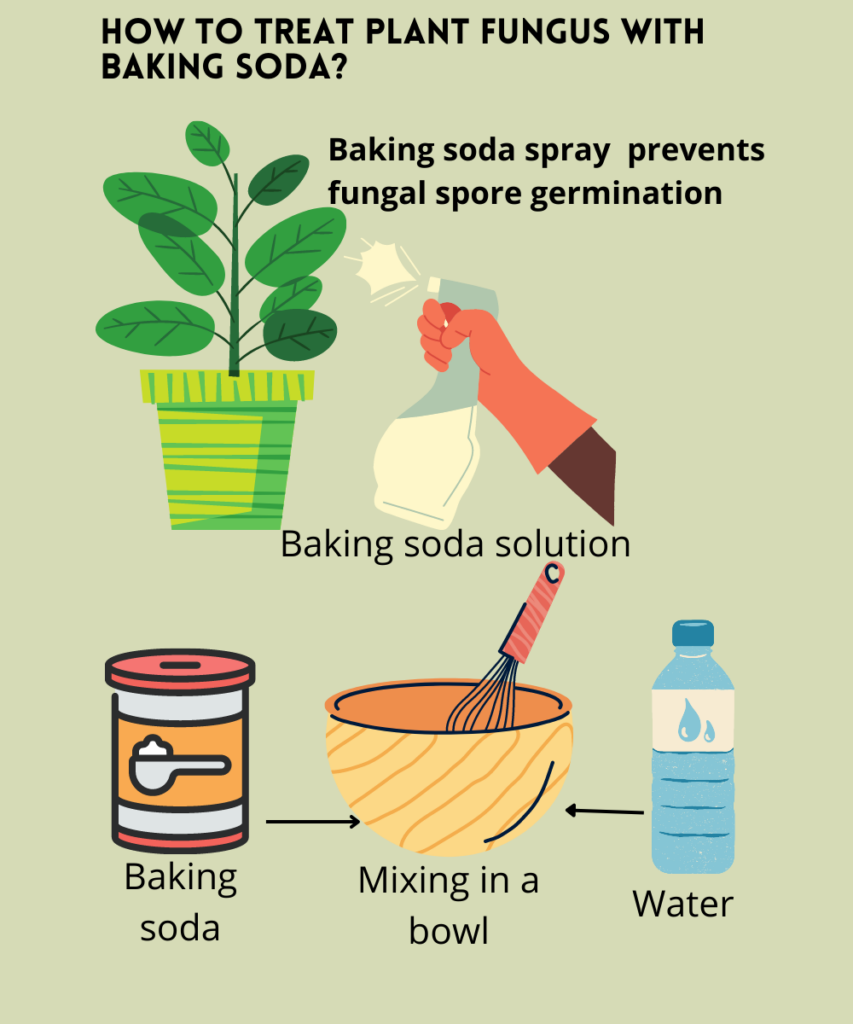
Making baking soda spray for plant fungus
The process of making baking soda spray is quick and straightforward.
- Take one tablespoon of baking soda into a bowl.
- Add one quart of water with a few drops of dish soap to help the spray spread on the plant’s leaves.
- Mix it thoroughly and pour it into a clean spray bottle
Note: You can add insecticidal soap or any other liquid dish soap but not laundry detergent to spread the solution uniformly on leaves.
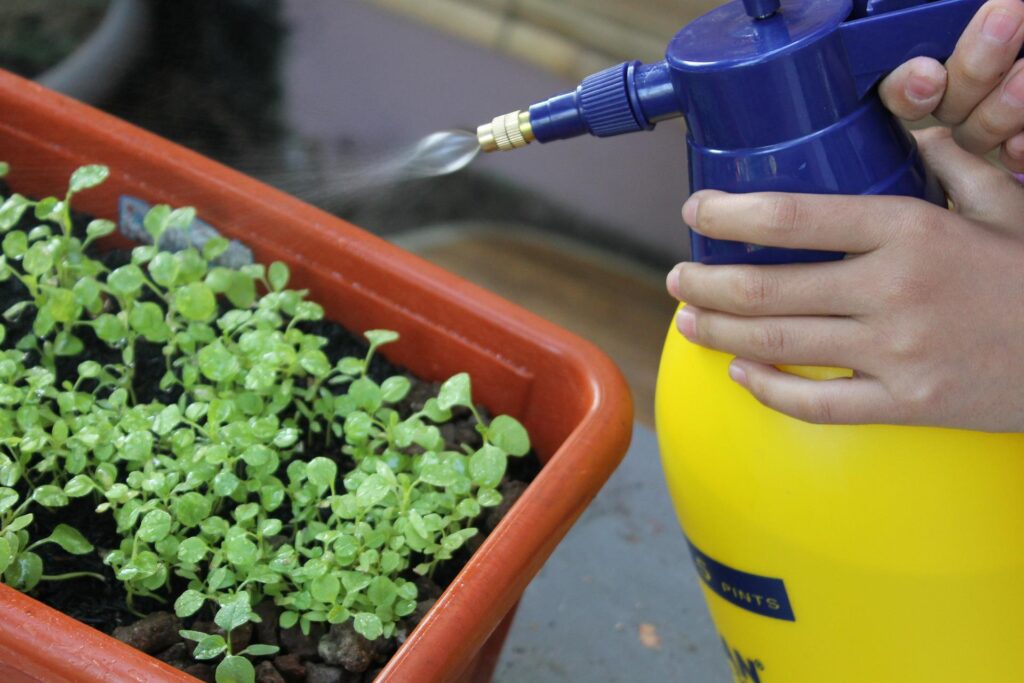
Spraying baking soda on plants
Spray the plant thoroughly with baking soda solution and ensure the upper and lower side of the leaves is fully saturated. Repeat the applications every week until the unusual spotting is gone.
If the problem persists, use more strong antifungal agents to kill powdery mildew and other fungal plant pathogens.
Note: Avoid constant applications of baking soda solution; otherwise, the spray will seep through to the soil. The bicarbonates may accumulate in the ground (salt build-up), interfere with nutrient uptake, and stunt plant growth. Therefore, if you notice any such damage to your plants, discontinue the applications of baking soda for plant fungus control.
Frequently Asked Questions
How Do You Use Chamomile Tea for Pest Control?
Chamomile tea works best as a natural insecticide and fungicide because it contains sulfur which provides nutrition and protection from pests at the same time. To make a chamomile tea spray, brew a batch of tea for 24 hours and pour it into a spray bottle. Then, use it as a foliar spray and ensure the beneficial bees and other insects are not present in the garden.
What Does Fungus Look Like on Houseplants?
The fungus on houseplants appears as dark brown to black spots (fruiting bodies) on both the upper and lower sides of the leaves. These dark and irregular spots merge and cover the whole leaf surface (indicating the nutrient absorption by the fungus).
Different fungal infections appear additional on various host plants. For example, it seems yellow to pale green, tan, reddish, and brown. In other host plants, the fungus on infested plants appears as white powdery masses of spores that are ready to spread over other healthy plants.
How Do You Make Homemade Fungicide Spray?
The best homemade fungicide spray against fungal pathogens is the baking soda solution. Sodium bicarbonate has insecticidal and fungicidal properties and protects against all forms of fungal pathogens.
Mix one tablespoon of baking soda per gallon of water and insecticidal soap or mild dish soap. Pour the mixture into a spray bottle and mist on the plants.
How Do You Get Rid of Fungus on Plants?
One way to prevent plant fungus infections involves the adoption of preventative measures. These are:
- Use fungal disease-resistant varieties
- Monitor your plants daily for symptom appearance or spores
- At first appearance or development of symptoms, isolate the infected plant from the rest and regularly spray with mild chemicals or home remedy.
- Spray your plants with neem oil, insecticidal soap, and vinegar to stop the spore germination of powdery mildew in the first place.
- Do not overwater your plants because humid conditions favor the development of fungal spores.
- Spray your plants with copper and sulfur-based commercial fungicides to kill the fungus instantly in the case of vegetables.
- Remove the alternate host such as weeds and other herbal fungus to interfere with their life cycle.
- Remove and discard the garden debris, harvest residues, and weaker plants to stop the infection cycle of the fungus and further spreading.
- Keep your plants healthy because a healthy plant will fight back and quickly recover from insects, pests, and plant fungus injuries.
- Delay the sowing time of your favorite vegetables when you feel the weather conditions are favorable for the fungal infection initiation.
How Much Baking Soda Do I Put on a Plant?
The best way to use or apply baking soda to your favorite plant is;
- Take four teaspoons of baking soda per gallon of water.
- Mix the ingredients in a bowl thoroughly.
- Pour the solution into a spray bottle.
Apply on your ornamental plants and vegetables to diminish the common fungal problems. Reapply after every day until the fungal pain is gone.
What Liquid Makes Plants Grow Faster?
Soil hosts the all-important ingredients required for healthy plant growth. To speed up the development of plants, additional liquid in the form of nutrients or fertilizers is added. These nutrients are available in granule forms and mixed with water for different applications. The addition of these healthy mixtures enhances plant growth and vigor against harmful insects and fungal pathogens.
Can You Mix Epsom Salt and Baking Soda for Plants?
Yes, you can mix the Epsom salt and baking soda for plants. Applying this mixture (Epsom salt plus baking soda) will have tremendous benefits for plants. It will provide nutrition and protection (insect pests and microbial pathogens). To make this solution;
- Mix one teaspoon of baking soda and half a teaspoon of clear ammonia.
- Add one teaspoon of Epsom salt per gallon of water.
- Mix it well in a container and apply to plants.
This solution will enhance plant growth, improve its appearance, and provide strength against pathogens (plant fungus).
What Happens When You Mix Vinegar and Baking Soda?
A new solution is formed while mixing the vinegar and baking soda. The mixture consists of carbon dioxide bubbles, and baking soda completely dissolves into vinegar.
Can You Add Baking Soda to the Soil?
Baking soda is alkaline, and its addition to the soil reduces the acidity of the ground and improves the overall health of plants. For example, baking soda for tomato plants eliminates soil acidity and improves fruit development and flavor. Similarly, baking soda prevents the leaf curling in bell peppers and enhances the size of products (bell peppers).
Sources for Further Reading
- Beckerman, J. (n.d.). Using Organic Fungicides. Department of Botany and Plant Pathology, Purdue University. Retrieved May 10, 2022, from https://www.extension.purdue.edu/extmedia/bp/bp-69-w.pdf
- Mendelsohn, E. (2011, October 6). Use of Baking Soda as a Fungicide. Slide Share. Retrieved May 10, 2022, from https://www.slideshare.net/ElisaMendelsohn/use-of-baking-soda–as-a-fungicide
- Scott, L. C.-. (2009). Baking soda will fungi fail, and roses rejoice? Washington State University. Retrieved May 10, 2022, from https://s3.wp.wsu.edu/uploads/sites/403/2015/03/baking-soda.pdf
Do you have other tips on how to treat plant fungus with baking soda? Share it in the comment section below. Also, check out these articles:
Fungus Gnats: What Are the Best Management Practices for Them on Houseplants?
Fungus Gnats vs. Fruit Flies: How to Get Rid of Them on Houseplants?
Scale Insects: How to Identify and Manage Them for Plant Health?







